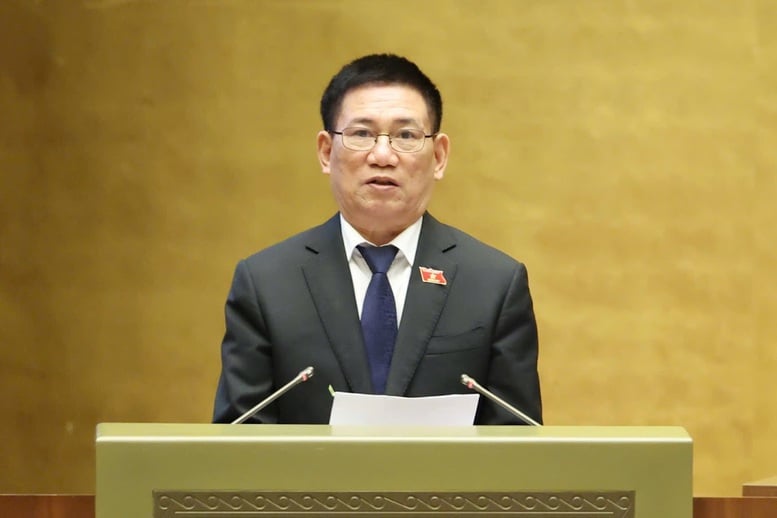
Deputy Prime Minister Ho Duc Phoc presented a summary report assessing the situation and results of 5 years of implementing Resolution No. 31/2021/QH15 dated November 12, 2021 of the National Assembly on the Economic Restructuring Plan for the 2021-2025 period - Photo: VGP/Nhat Bac
On the afternoon of October 20, on behalf of the Government, Deputy Prime Minister Ho Duc Phoc presented a Summary Report assessing the situation and results of 5 years of implementing Resolution No. 31/2021/QH15 dated November 12, 2021 of the National Assembly on the Economic Restructuring Plan for the 2021-2025 period.
Firstly, regarding the context of implementation and impact on the implementation of the Economic Restructuring Plan for the 2021-2025 period, according to the Government's report, the Economic Restructuring Plan for the 2021-2025 period is being implemented in the context of the world and regional situation having many rapid, complex, unpredictable and unprecedented changes.
Trade and strategic competition among major countries is increasingly fierce and comprehensive in all fields; armed conflicts and escalating geopolitical tensions in a number of countries and regions have significantly affected global economic growth and the macro environment.
In particular, the COVID-19 pandemic has had a prolonged, severe and profound impact on all aspects of economic and social life.
Natural disasters and climate change are occurring with increasing frequency; new non-traditional security issues are emerging; national, cross-border, and high-tech crimes continue to have a strong impact on many countries.
In the country, besides the advantages of a stable political foundation, a continued consolidation of the macro economy, an improved investment and business environment, and a gradual and reasonable economic restructuring, the economy faces many difficulties and major challenges from both external factors and internal problems.
However, with the drastic participation of the entire political system and the joint efforts, consensus and outstanding efforts of the entire Party, people, army and business community, and the support of international friends, our country has overcome difficulties and challenges, continued to achieve important and quite comprehensive development results with many outstanding bright spots.
Second, the situation and results of implementing key tasks.
Regarding the 27 targets set out in Resolution No. 31/2021/QH15, up to now, 23/27 targets have assessment information. Of which, 10/23 targets are likely to be completed; 09/23 targets are unlikely to be completed and 04/23 targets are expected to be incomplete.
Some indicators such as: Increasing labor productivity; Number of enterprises; Number of agricultural cooperatives applying high technology; Rate of agricultural cooperatives linked with enterprises in the value chain; Ratio of expenditure on science and technology, in the implementation process, encounter difficulties and challenges, requiring great efforts to be achieved.
Regarding the 05 key task groups in Resolution No. 31/2021/QH15 of the National Assembly set out for the period 2021-2025, the Government issued Resolution No. 54/NQ-CP with 102 tasks being implemented and bringing about many important results. To date, 86/102 have been completed (accounting for 84.3%); 16/102 (accounting for 15.7%) tasks have been and are continuing to be implemented.
Summary of implementation status of key task groups:
On focusing on completing the goals of restructuring public investment, the state budget, credit institutions and public service units.
Restructuring the state budget: Institutional and legal reforms related to restructuring the state budget continue to be implemented in the direction of strengthening the leading role of the central budget, the autonomy and initiative of local budgets; enhancing the role of financial policy in mobilizing, allocating and effectively using resources.
The tax policy system continues to be improved in a synchronous direction, covering all revenue sources, expanding the revenue base; and increasing the proportion of domestic revenue.
Restructuring public investment : Reforming investment institutions, including public investment, has been focused on; drastic direction and management have removed many difficulties and obstacles in implementing public investment projects, contributing to speeding up the disbursement of public investment capital, thereby promoting growth recovery.
Restructuring state-owned enterprises: The completion of the system of legal policy mechanisms focuses on removing difficulties and obstacles to speed up the progress of equitization and divestment and limit the loss of capital and state assets in the process of restructuring state-owned enterprises.
Thereby, facilitating the restructuring process of state-owned enterprises, ensuring strictness and transparency, maximizing the benefits of the State.
The leading role of state-owned enterprises in a number of key areas and sectors has been enhanced, contributing to economic restructuring associated with growth model innovation.
Restructuring credit institutions: Restructuring the credit institution system associated with bad debt handling continues to be implemented in the 2021-2025 period, focusing on perfecting institutions in accordance with market principles, aiming to create a clear and substantial shift.
In particular, focusing on implementing the direction of competent authorities on restructuring and handling weak credit institutions, ensuring stable operations and supporting these credit institutions to gradually recover; directing credit institutions to complete and drastically implement restructuring plans associated with bad debt handling in the 2021-2025 period; promoting bad debt handling and bad debt recovery; improving credit quality, preventing and limiting new bad debts.
Restructuring public service units: Institutions and policies on restructuring public service units continue to be reviewed, supplemented and newly issued to ensure consistency and synchronization between legal regulations, meeting practical requirements of operations in sectors and fields.
Public service units continue to be reviewed, arranged, and restructured towards streamlining the internal apparatus , improving operational capacity and effectiveness of state management; reducing at least 10% of the number of public service units in accordance with the spirit of Resolution No. 19-NQ/TW and Conclusion No. 62-KL/TW dated October 2, 2023 of the Politburo, Resolution No. 38/NQ-CP dated April 2, 2024 of the Government.
Developing various types of markets, improving the efficiency of resource allocation and use
Many legal documents, policies, management solutions, and solutions to remove difficulties and obstacles, especially the recent issuance of key and breakthrough Resolutions of the Politburo (Resolutions No. 57, 59, 66, 68, 71, 72,...) have created the premise to bring the country into a new era.
Digital technology is promoted for application in market development, forming centralized trading floors, ensuring transparent, safe and healthy market operations.
The legal framework for markets: Financial market; land use rights market, real estate market; labor market; science and technology market are gradually standardized, state management work is deployed synchronously, overcoming shortcomings and obstacles and creating a foundation for the overall development of the economy.
Regarding the development of business forces; promoting connections between businesses of all economic sectors; innovating and developing the collective economy and cooperatives: The completion of the system of policy and legal mechanisms focuses on removing difficulties and obstacles to promote the restructuring of state-owned enterprises, removing difficulties and obstacles to promote the development of the private economy ( Resolution No. 68-NQ/TW of the Politburo ), innovating and developing the collective economy and cooperatives.
Investment promotion policies and investment promotion methods have been innovated towards efficiency, in line with the new context of global minimum tax, creating a strong shift in the contribution structure of economic sectors to overall growth in the 2021-2025 period.
Regarding urban economic development, strengthening regional linkages, urban-rural linkages and promoting the effective role of key economic zones and large cities : The work of building national planning, regional planning, sectoral planning and provincial planning has been actively implemented.
Up to now, 108/110 (98.2%) of the plans have been decided or approved by competent authorities; 02/110 plans have not been approved ( Planning for the development of the network of press, radio, television, electronic information, and publishing establishments for the period 2021-2030, with a vision to 2050 and the Master plan for the national reserve system for the period 2021-2030, with a vision to 2050 ).
Urban infrastructure, digital infrastructure, intra-regional and inter-regional traffic connection infrastructure, and urban-rural connection infrastructure have received focused investment, achieving outstanding results.
Mechanisms and policies to promote regional linkages and specific mechanisms for a number of cities and localities have been implemented, promoting the movement of resources, exploiting more effectively the advantages of regions and localities, promoting the leading role in innovating the growth model of key economic zones and large cities, and strengthening urban-rural linkages.
Promoting the restructuring of economic sectors towards digitalization, greening, application of scientific and technological advances, and innovation : The economic structure continues to shift positively, the contribution of industrial and service sectors to GDP continues to increase (from 78.5% in 2020 to 80.33% in 2025).
The application of digital technology and digital transformation has become popular in industries, fields, localities, and in daily life and business activities, contributing to economic growth.
The structure between and within industries has shifted towards modernization, promoting green economy, enhancing the application of science and technology, improving productivity, quality, efficiency, competitiveness, and maximizing potentials and advantages.
Some shortcomings and limitations: The progress of building institutions and policies to promote economic restructuring has not yet met development requirements in a timely manner; the economic structure and growth model have made progress but have not yet created many significant changes.
The development of business forces still has certain limitations; economic sectors have not had a strong shift in productivity growth, especially in the industrial and service sectors.
Restructuring of state-owned enterprises and public service units is still slow and fails to meet requirements ; restructuring of some key areas still faces many difficulties and challenges; and the operation of various types of markets has not yet achieved high efficiency, ensuring conditions for sustainable development.
Causes of the shortcomings and limitations : The world economic context continuously presents risks and instabilities, negatively impacting the sustainable growth of our country; the legal system still has many shortcomings and limitations while the progress of amending, supplementing and perfecting legal documents has not met the timeliness; administrative procedures are still cumbersome; decentralization and delegation of power in some areas still have many problems.
Promote business development, accelerate restructuring of state-owned enterprises
The Government has identified a number of key areas in directing and implementing the tasks and solutions to restructure the economy as follows:
Firstly, continue to focus on perfecting institutions and the legal system to remove barriers and promote the process of economic restructuring. Urgently issue documents to implement the laws recently passed by the National Assembly.
Second, speed up progress and complete restructuring goals in key areas. Promote disbursement of public investment capital and national target programs and strive to achieve a disbursement rate of 100% of the plan by 2025.
Third, effectively implement solutions to promote business development and accelerate the restructuring of state-owned enterprises. Actively deploy the construction of a digital government and policy solutions to improve and upgrade the quality of the investment and business environment.
Fourth, focus on promoting the leading role in innovating the growth model of large cities and growth poles.
Fifth, promote the transformation of industries towards the use of modern technology; develop green economy, circular economy, and digital economy.
Sixth, develop all types of markets, increase the application of digital technology with breakthrough solutions, and carry out strong, comprehensive, synchronous, and extensive reforms to promote economic restructuring.
Create an open, equal and favorable investment environment to promote the development of enterprises and cooperatives.
Based on the assessment results of the situation and implementation results of the Economic Restructuring Plan for the 2021-2025 period, the international and domestic context and solution orientations for the last months of 2025, the Government will continue to implement:
Firstly, closely direct the ministries, agencies and localities assigned to be the agencies in charge of implementing the goals and targets, focus on monitoring, supervising and evaluating the ability to achieve the goals, and promptly propose and supplement necessary solutions to strive to complete the set important goals and targets by the end of 2025.
Second, direct ministries and agencies to continue to focus on implementing and completing programs and projects serving economic restructuring in the 2021-2025 period to create clear results in economic restructuring; continue to create an open, equal, and favorable investment environment to promote the development of enterprises and cooperatives; focus on promoting the leading role of large cities and growth poles; organize the realization of institutional breakthroughs, remove difficulties for enterprises, especially the recent Resolutions of the Politburo (such as Resolutions No. 57, 59, 66, 68, 71, 72,...).
Third , continue to research and build a new economic development model associated with the high growth period to exploit and promote new growth drivers, take advantage of the achievements of the Fourth Industrial Revolution; apply science and technology, innovation, digital transformation; develop digital economy, green economy, circular economy, data economy...
This model requires quantifying the indicators to measure the proposed goals; ensuring macroeconomic safety, identifying internal movements between each region and each economic sector; improving labor productivity; helping to participate deeply in the global value chain; controlling unpredictable risks and fluctuations...
Tran Manh
Source: https://baochinhphu.vn/tap-trung-hoan-thien-the-che-thao-go-nhung-rao-can-thuc-day-qua-trinh-co-cau-lai-nen-kinh-te-102251020184319918.htm


![[Photo] Solemn opening of the 10th Session, 15th National Assembly](https://vphoto.vietnam.vn/thumb/1200x675/vietnam/resource/IMAGE/2025/10/20/1760937111622_ndo_br_1-202-jpg.webp)
![[Photo] Prime Minister Pham Minh Chinh meets with Speaker of the Hungarian National Assembly Kover Laszlo](https://vphoto.vietnam.vn/thumb/1200x675/vietnam/resource/IMAGE/2025/10/20/1760970413415_dsc-8111-jpg.webp)

![[Photo] National Assembly Chairman Tran Thanh Man holds talks with Hungarian National Assembly Chairman Kover Laszlo](https://vphoto.vietnam.vn/thumb/1200x675/vietnam/resource/IMAGE/2025/10/20/1760952711347_ndo_br_bnd-1603-jpg.webp)

![[Photo] Chairman of the Hungarian Parliament visits President Ho Chi Minh's Mausoleum](https://vphoto.vietnam.vn/thumb/1200x675/vietnam/resource/IMAGE/2025/10/20/1760941009023_ndo_br_hungary-jpg.webp)
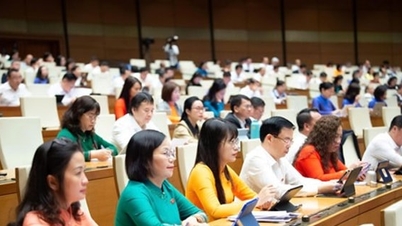

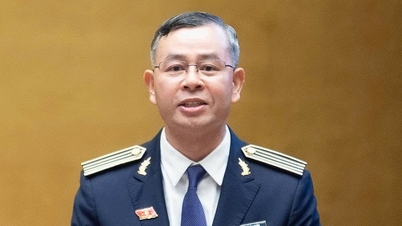

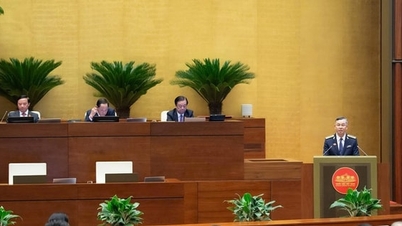
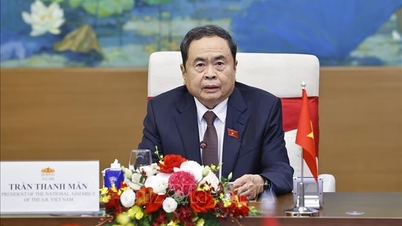

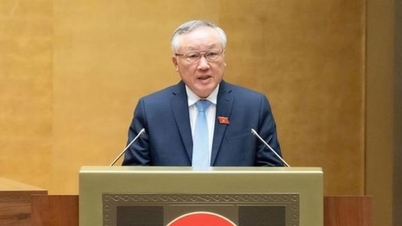
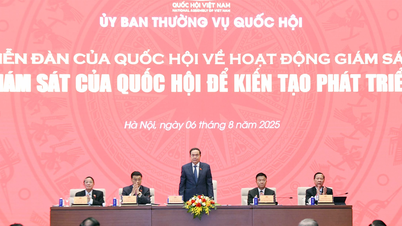




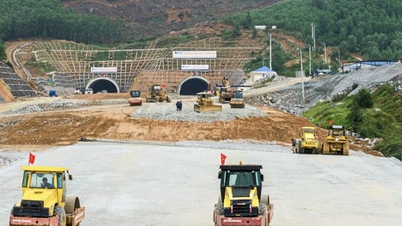
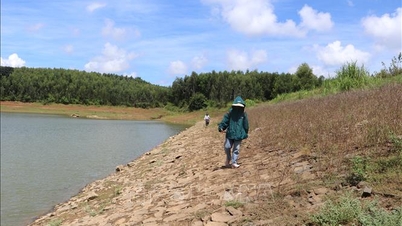

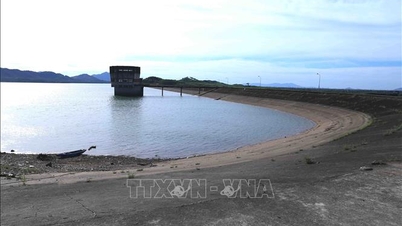




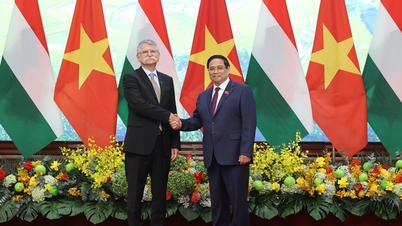
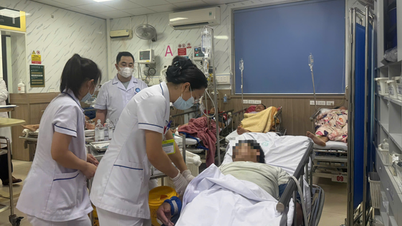
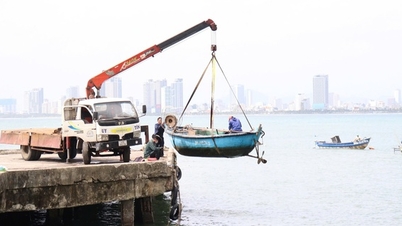


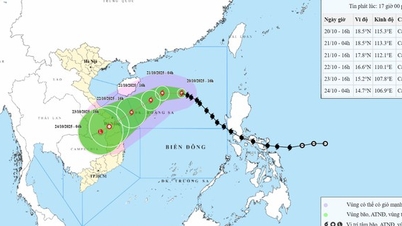
![[Photo] The Steering Committee of the 2025 Fall Fair checks the progress of the organization](https://vphoto.vietnam.vn/thumb/1200x675/vietnam/resource/IMAGE/2025/10/20/1760918203241_nam-5371-jpg.webp)


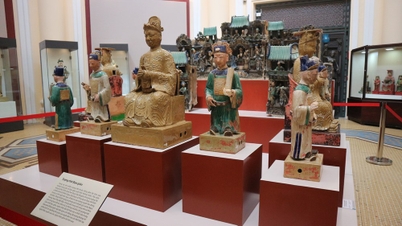




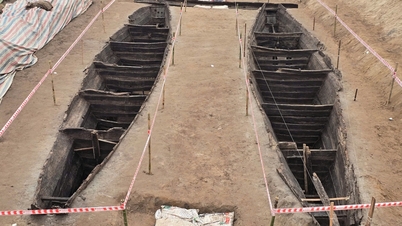






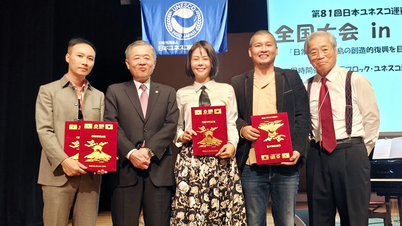








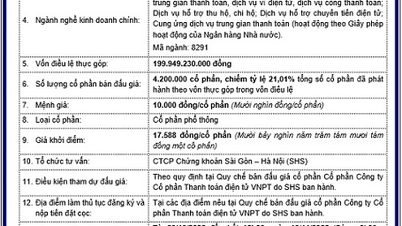
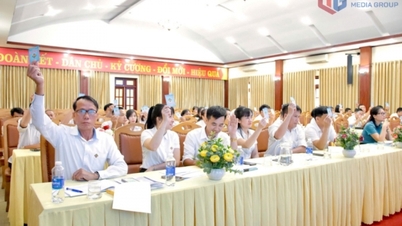

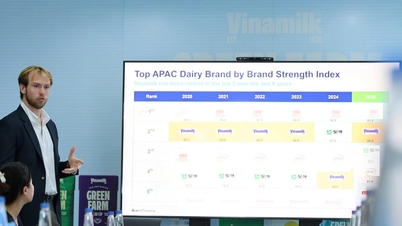

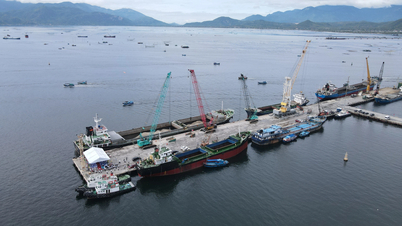








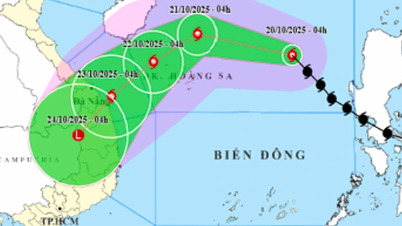

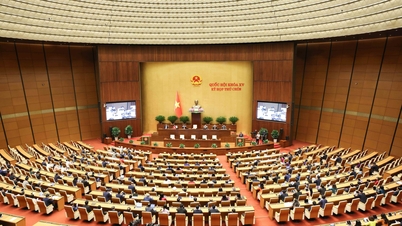


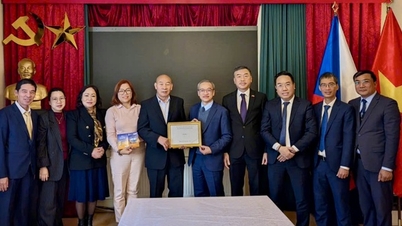


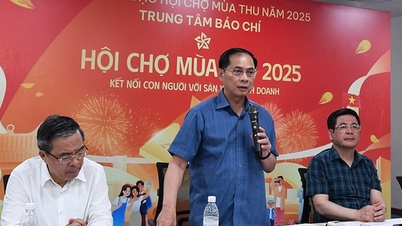
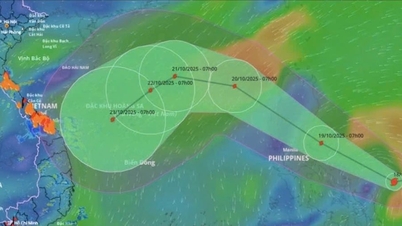



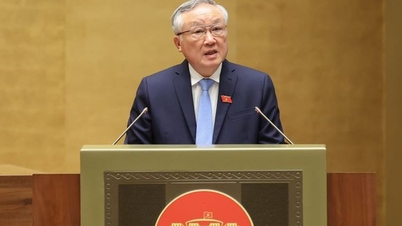
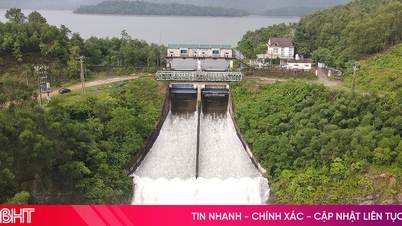




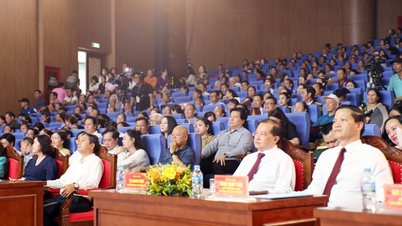

















Comment (0)